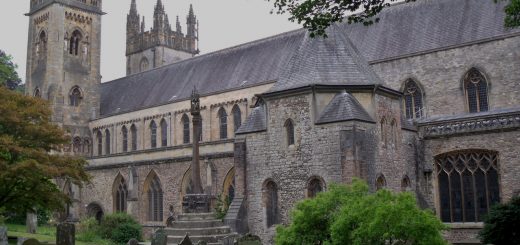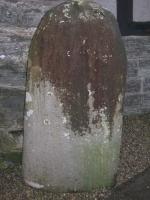St Govan’s Chapel
This tiny chapel hidden in a deep ravine in the rocks dates from the thirteenth century. There may have been a chapel or religious structure here in the fifth century making it one of the earliest places of Christian worship. It has been suggested that the chapel was part of a larger Hermitage but its history is unclear.
![Hamburg103a [CC BY-SA 4.0 (https://creativecommons.org/licenses/by-sa/4.0)], from Wikimedia Commons](http://www.mysteriousbritain.co.uk/wp/wp-content/uploads/2019/01/St._Govans_Chapel_001-300x199.jpg) The chapel can be accessed from a series of steps cut into the cliff face. Traditionally these steps were thought to be uncountable. According to legend the cleft in the rock face was said to open and close to allow St Govan to hide from his enemies or in times of danger.
The chapel can be accessed from a series of steps cut into the cliff face. Traditionally these steps were thought to be uncountable. According to legend the cleft in the rock face was said to open and close to allow St Govan to hide from his enemies or in times of danger.
History does not record a St Govan, and there are a number of theories about who he may have been. According to Arthurian tradition St Govan is really a corruption of Sir Gawain, the bravest of Arthur’s company, who spent his life here after the death of Arthur and is buried under the altar. Other researchers suggest that St Govan may have been associated with St David.
There is a small holy well not far away from the chapel but it has now been filled in, in the past the well was used for curing lameness, rheumatism and bad sight. The local red clay was mixed with the water of the well and applied to the affected spot. It was also customary to apply water with a limpet shell.
Directions: South of Bosherston along part of the Pembrokeshire Coast Path




Re: St Govan’s Chapel
British Goblins (1881) by Wirt Sykes:
‘Also in this parish (St David’s) is the renowned Expanding Stone, an excavation in the rock of St. Gowan’s chapel, which has the magic property of adapting itself to the size of the person who gets into it, growing smaller for a small man and larger for a large one. Among its many virtues was that if a, person got into it and made a wish, and did not change his mind while turning about, the wish would come true. The original fable relates that this hollow stone was once solid; that a saint closely pursued by Pagan persecutors sought shelter of the rock, which thereupon opened and received him, concealing him till the danger was over and then obligingly letting him out. This stone may probably be considered as the monkish parallel for the magic stones which confer on their possessor invisibility, as we find them in the romances of enchantment. In the ‘Mabinogion’ such stones are frequently mentioned, usually in the favourite form of a gem set within a ring.’